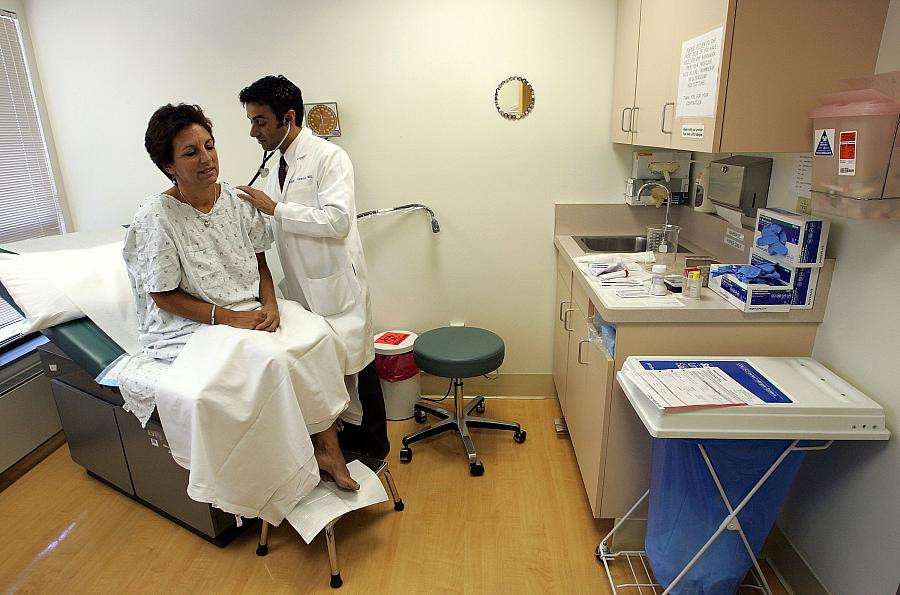Primary care docs often don’t hear how the story ends once patients handed to specialists

Photo: Justin Sullivan/Getty Images
Recently, I ran across a collection of hastily jotted notes from my time in an urgent care clinic. “Tachycardic ... Short of breath ... sent to ER — PE?” “Right-sided abdominal pain — CT — appy?” “Couldn’t swallow at all! Sent for endoscopy.”
I don’t know the answers to any of those questions. Did the young athlete have a pulmonary embolism after flying back from a game? Did the nurse have appendicitis? Did the fashionably dressed older woman have a huge tumor in her esophagus?
In an ideal world, “receiving” doctors would notify the “sending” doctors about how the case turned out. Radiologists would call and say, “Hey, you were right!” Or, they might point out something the sending doctor missed and educate him. The urgent care doctor would then look up “knee pain” or “blood in the urine” and realize what question he should ask next time or what examination maneuver could have revealed the diagnosis, potentially saving the patient time, money, and radiation. Emergency room doctors would call or text and say “Yes, she had a heart attack,” or “This was just a urinary tract infection, and send over some decent coffee already.”
In the clinic setting, I have referred patients to all kinds of specialists, but very rarely have I received documentation about what happened when I sent my patient over. This is not what’s supposed to happen; the consulting physician is always supposed to communicate with the primary doctor. For the few doctors that did actually do this, I shifted my referring patterns toward them as an unspoken reward (except for the ophthalmologist who sent over notes along with a request for us to call the insurance company to approve every patient’s lucrative and totally unnecessary computerized visual field testing). The cardiologists and surgeons who were conscientious enough to write to me, I wagered, were providing better care and better documentation anyway.
From what I hear from older doctors, there used to be a lot more of this. In the genteel days of medicine, when no one was “employed” and seeing more patients meant more money, a detailed consultation note would appear, concluding with “Thank you for your kind referral” or “Thank you for this interesting patient.” At the end of the year, there’d even be a bottle of wine or other holiday gift. Now, there will be 30 patients to see from the HMO regardless of whether the specialist communicates or not, and I have seen a corresponding decline in the notes faxed over, a decline in mutual teaching and learning.
I wonder about those patients I have seen, disappeared into the ether of the next stage of care. On every transfer-to-ER note or radiology request, I’d put my cell phone number and a request for a call when the patient was evaluated. Maybe once or twice, the phone would ring.
Patient care and doctors’ clinical acumen improve when doctors keep learning from their hunches. That’s what happens in medical school and residency, when specialists and primary care doctors congregate in the same hallways to discuss cases, and the radiologist is a quick skip downstairs to the basement. The harried silos of clinic, urgent care, ER, hospital, and specialist don’t replicate this in the way they should, mostly because the incentives are no longer there. There is only the curiosity of a referring doctor, chasing down her patients' story endings, one at a time.
**

